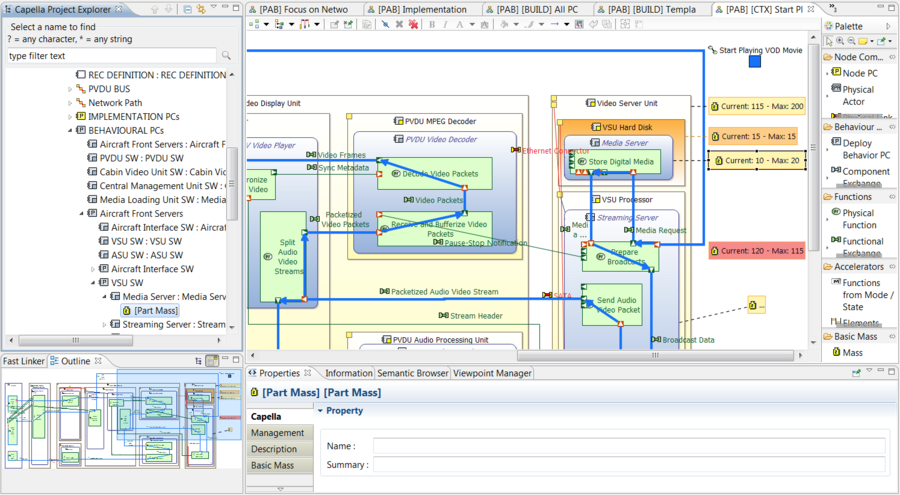Notice: this Wiki will be going read only early in 2024 and edits will no longer be possible. Please see: https://gitlab.eclipse.org/eclipsefdn/helpdesk/-/wikis/Wiki-shutdown-plan for the plan.
Capella/Viewpoints/BasicMass
Contents
Purpose
The Mass viewpoint enables to simply describe the non-functional aspect of mass in Capella.
Scope
Mass information can be added on a Physical Component or graphically in PAB diagrams.
Principles
On a Physical Component, a "Mass" annotation indicates the mass associated to a component. A "Maximal Mass" defines the upper mass accepted by a component.
When a component contains sub-components, recursively, the total mass is the sum of the mass of its sub-components and its mass.
Graphically, when:
- Total mass < Maximal Mass: the Physical Component and associated annotation are displayed in green.
- Total mass = Maximal Mass: the Physical Component and associated annotation are displayed in orange.
- Total mass > Maximal Mass: the Physical Component and associated annotation are displayed in red.
Practice
The Basic Mass viewpoint enriches the Capella palette with a new section composed of one icon:
- Mass: it enables to set the mass of a Physical Component Node or Behavioral Component.
Use of Mass:
- Click on the icon and next on a Physical Component Node or Behavioral Component.
- Set the current Value and Max Value in the 'Basic Mass' section of the Properties view.
- The mass of the components containing the current component are automatically recomputed and the colors change if needed.
A Mass can be alone on the current diagram. That means that this Mass is applied on the Physical Component which contains the diagram (e.g., the Physical System).

